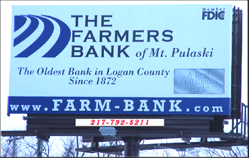|
 Last week's building collapse in Bangladesh that killed hundreds of clothing factory workers put a spotlight on the sobering fact that people in poor countries often risk their lives working in unsafe factories to make the cheap T-shirts and underwear that Westerners covet. Last week's building collapse in Bangladesh that killed hundreds of clothing factory workers put a spotlight on the sobering fact that people in poor countries often risk their lives working in unsafe factories to make the cheap T-shirts and underwear that Westerners covet.
The disaster, which comes after a fire in another Bangladesh factory killed 112 people last November, also highlights something just as troubling for socially conscious shoppers: It's nearly impossible to make sure the clothes you buy come from factories with safe working conditions.
Very few companies sell clothing that's so-called "ethically made," or marketed as being made in factories that maintain safe working conditions. In fact, ethically made clothes make up a tiny fraction of 1 percent of the overall $1 trillion global fashion industry. And with a few exceptions, such as the 250-store clothing chain American Apparel Inc., most aren't national brands.
It's even more difficult to figure out if your clothes are made in safe factories if you're buying from retailers that don't specifically market their clothes as ethically made. That's because major chains typically use a complex web of suppliers in countries such as Bangladesh, which often contract business to other factories. That means the retailers themselves don't always know the origin of clothes when they're made overseas.

And even a "Made in USA" label only provides a small amount of assurance for a socially conscious shopper. For instance, maybe the tailors who assembled the skirt may have had good working conditions. But the fabric might have been woven overseas by people who do not work in a safe environment.
"For the consumer, it's virtually impossible to know whether the product was manufactured in safe conditions," says Craig Johnson, president of Customer Growth Partners, a retail consultancy. "For U.S.-made labels, you have good assurance, but the farther you get away from the U.S., the less confidence you have."
To be sure, most global retailers have standards for workplace safety in the factories that make their clothes. And the companies typically require that contractors and subcontractors follow these guidelines. But policing factories around the world is a costly, time-consuming process that's difficult to manage.
In fact, there were five factories alone in the building that collapsed in Bangladesh last week. They produced clothing for big name retailers including British retailer Primark, Children's Place and Canadian company Loblaw Inc., which markets the Joe Fresh clothing line.
"I have seen factories in (Bangladesh and other countries), and I know how difficult it is to monitor the factories to see they are safe," says Walter Loeb, a New York-based retail consultant.
And some experts say that retailers have little incentive to be more proactive and do more because the public isn't pushing them to do so.
America's Research Group, which interviews 10,000 to 15,000 consumers a week mostly on behalf of retailers, says that even in the aftermath of two deadly tragedies in Bangladesh, shoppers seem more concerned with fit and price than whether their clothes were made in factories where workers are safe and make reasonable wages.
C. Britt Beemer, chairman of the firm, says when he polls shoppers about their biggest concerns, they rarely mention "where something is made" or "abuses" in the factories in other countries.
"We have seen no consumer reaction to any charges about harmful working conditions," he says.

Tom Burson, 49, certainly is focused more on price and quality when he's shopping. Burson says that if someone told him that a brand of jeans is made in "sweatshops by 8-year-olds," he wouldn't buy it. But he says, overall, there is no practical way for him to trace where his pants were made.
"I am looking for value," says Burson, a management consultant who lives in Ashburn, Va. "I am not callous and not unconcerned about the conditions of the workers. It's just that when I am standing in a clothing store and am comparing two pairs of pants, there's nothing I can do about it. I need the pants."
In light of the recent disasters, though, some experts and retailers say things are slowly changing. They say more shoppers are starting to pay attention to labels and where their clothes are made.
Swati Argade, a clothing designer who promotes her Bhoomki boutique in the Brooklyn borough of New York City as "ethically fashioned," says people have been more conscious about where their clothes come from.
The store, which means "of the earth" in Hindi, sells everything from $18 organic cotton underwear to $1,000 coats that are primarily made in factories that are owned by their workers in India or Peru or that are designed by local designers in New York City.
"After the November fire in Bangladesh, many customers says it made them more aware of the things they buy, and who makes them," Argade says.
[to top of second column] |
 Jennifer Galatioto, a 31-year-old fashion photographer from Brooklyn, is among the shoppers who have become thoughtful about where her clothes are made. Galatioto has been making trips to local shops in the Williamsburg, a section of Brooklyn that sells a lot of clothes made locally. She has also ventured to local shopping markets that feature handmade clothing.
"I am trying to learn the story behind the clothing and the people who are making it," she says.
Some retailers are beginning to do more to ease shoppers' consciences.
Wal-Mart Stores Inc., the world's largest retailer, said in January that it would cut ties with any factory that failed an inspection, instead of giving warnings first as had been its practice. The Gap Inc., which owns the Gap, Old Navy and Banana Republic chains, hired its own chief fire inspector to oversee factories that make its clothing in Bangladesh.
Still, Wal-Mart, Gap and many other global retailers continue to back off from a union-sponsored proposal to improve safety throughout Bangladesh's $20 billion garment industry. As part of the legally binding agreement, retailers would be liable when there's a factory fire and would have to pay factory owners more to make repairs.
Fair Trade U.S.A., a nonprofit that was founded in 1998 to audit products to make sure workers overseas are paid fair wages and work in safe conditions, is hoping to appeal to shoppers who care about where their clothing is made. In 2010, it expanded the list of products that it certifies beyond coffee, sugar and spices to include clothing.
The organization, known for its black, green and white label with an image of a person holding a bowl in front of a globe, says it's working with small businesses like PrAna, which sells yoga pants and other sportswear items to merchants like REI and Zappos. It also says it's in discussions with other big-name brands that it declined to name.
To use the Fair Trade label on their products, companies have to follow certain safety and wage standards that are based on established industry auditing groups, including the International Labor Organization. They include such things as paying workers based on a formula that allows them to meet basic cost-of-living needs.

Local nongovernment groups train the retailers' workers on their rights. And workers are provided a grievance process to report problems directly to the Fair Trade organization.
Still, well under 1 percent of clothing sold in the U.S. is stamped with a Fair Trade label. And shoppers will find that Fair Trade certified clothing is typically about 5 percent more expensive than similar items that don't have the label.
Fair Indigo is an online retailer that sells clothes and accessories that are certified by Fair Trade U.S.A., including $59.90 pima organic cotton dresses, $45.90 faux wrap skirts and $100 floral ballet flats.
Rob Behnke, Fair Indigo's co-founder and president, says some shoppers are calling in and citing the latest fatalities in Bangladesh. The retailer, which generates annual sales of just under $10 million, had a 35 percent rise in revenue (compared with last year) following the disaster. That was in line with the 38 percent revenue surge it had during the November-December season, following the factory fire.
Behnke says that the company's catalog and website that features some of the garment workers in countries including Peru are resonating with shoppers.
"We are connecting consumers with the garment workers on a personal level," he says. "We are showing that the garment workers are just like you and me."
While some retailers are working to improve safety overseas, others are making a "Made in USA" pitch.
Los Angeles-based American Apparel, which says it knits, dyes, cuts and sews all of its products in-house in California, touts on its website that the working conditions are "sweatshop free." The company highlights how it pays decent wages, offers subsidized lunches, free onsite massages and an onsite medical clinic.

American Apparel officials didn't return phone calls for this article, but in an interview in November with The Associated Press, the company's founder and CEO, Dov Charney, said that companies can control working conditions but they need to bring the production to the U.S.
"When the company knows the face of its worker, that's important," Charney said.
[Associated
Press; By ANNE D'INNOCENZIO]
Copyright 2013 The Associated
Press. All rights reserved. This material may not be published,
broadcast, rewritten or redistributed. |